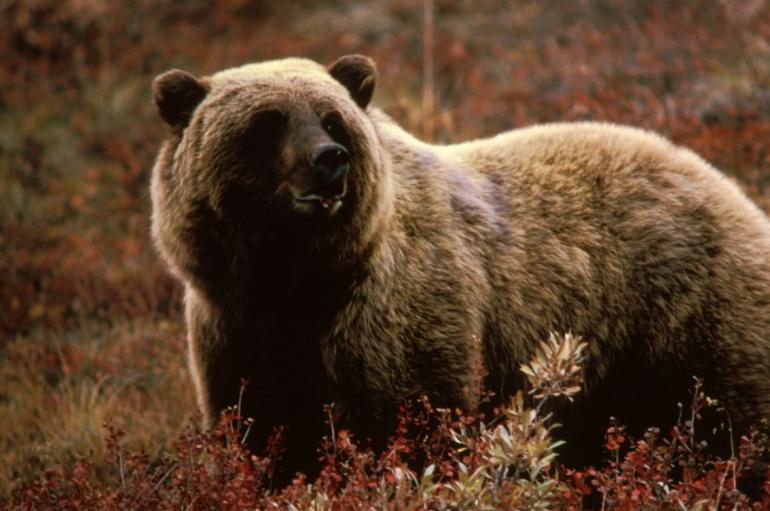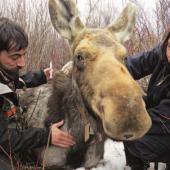Gorging Grizzlies
Bears embrace unlimited food opportunities this fall.
When a big-game hunter heads out into the woods, his targets of opportunity are dramatically limited by what is both legally in season and practically available. Even unsuccessful hunters are able to have a good time in the woods and then go home to enjoy life until next year. For grizzly bears, the same is not true. Bears either find what they need to survive in the woods, or get into trouble because they become too attracted to human-related foods, ranging from cattle to garbage. Seldom do grizzlies die of starvation! The main issue for both grizzlies and man is an unplanned encounter.
Grizzlies are incredible survivors. They are strong and intelligent. Left to their own devices, they will find all types of things to eat to not only survive, but thrive. Ongoing research work by members of the Interagency Grizzly Bear Study Team (IGBST) has identified over 200 different food sources for the grizzly bears of the Yellowstone Ecosystem. The key is that bears are incredible omnivores that are able to food shift as the conditions demand. Recent studies in Yellowstone Park have shown that even when certain grizzlies could not find a historical food source of spawning Yellowstone cutthroat trout, they took advantage that the same area served as an elk calving ground at the same time. Grizzlies are like people in that they eat all different types of foods, depending on availability. Certain foods may be more desirable, but none have been shown to be physically mandatory to survival. This means grizzlies will constantly be on the move looking for available foods. As hunters head out in pursuit of their quarry, they need to remember they are not alone.
Because grizzlies are an ultimate omnivore, they go where ever food can be found. While lots of foods exist in the forests, some grizzlies will head to the high talus slopes to eat Army Cutworm Moths while others drop down into potato fields. Basically, there are no bounds to where grizzlies can and will go for food. That is why their numbers are still increasing and the overall goal of recovery has been met numerically, if not yet legally, in the Yellowstone Ecosystem.
As grizzly numbers and range rebound the chances for conflicts with humans increases. Sometimes it's bears getting into trouble with human-related issues. Fortunately, these situations can be identified by bear conflict professionals, and work can be done with the public to correct or prevent. Other times, hunters head into grizzly territory and cross paths with a bear seeking to load up on food in preparation for hibernation. Because food is everywhere for bears, we as humans need to be constantly ready to interact with a bear. This means taking the time to learn about bear identification and behavior from the Internet, video, and books before heading out into the field. Always carry bear spray on your person where it is immediately available. These are simple things that hunters can do that will not affect their hunting ability, but could have a dramatic impact on the outcome of an encounter with a grizzly bear. After a successful hunt, it is important to be bear smart and make plenty of noise when returning to claim a carcass left behind.
Grizzlies are programmed to survive. Seeking food is instinctive behavior. Humans too are programmed to survive. However, to do so, we must use the physiological tool that allowed us to reach the top of the food chain: our brains.













